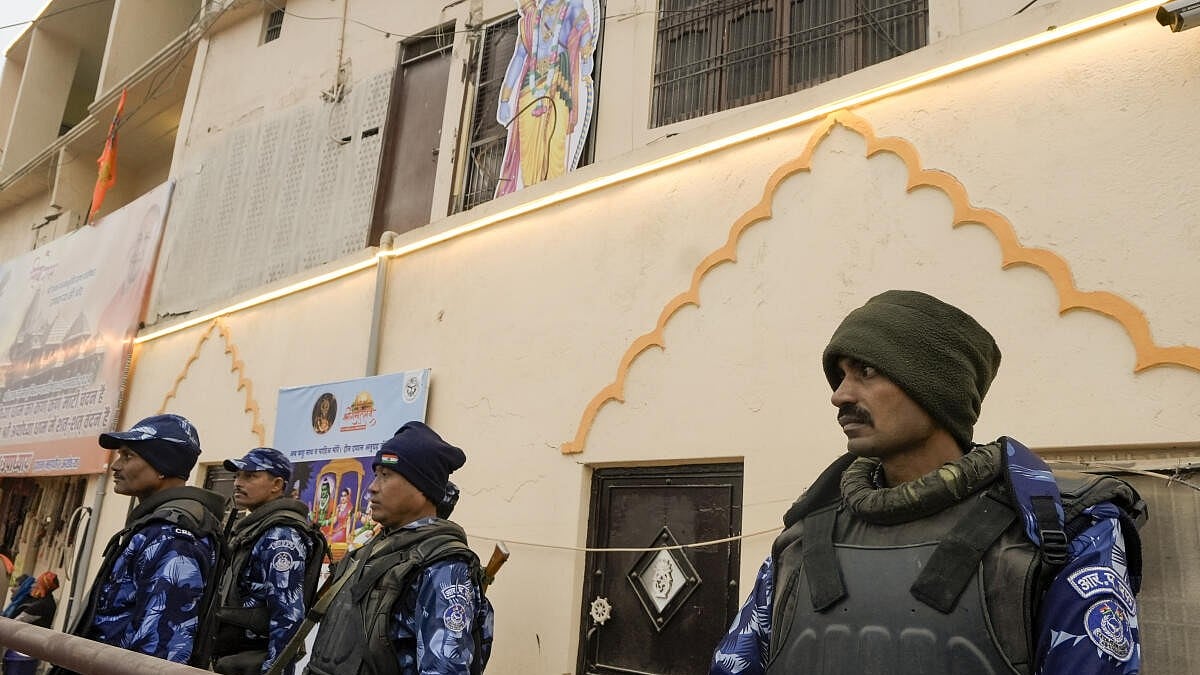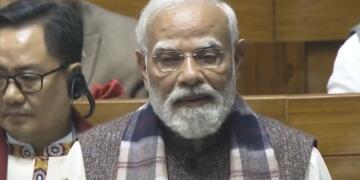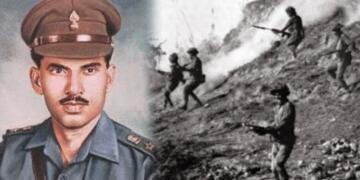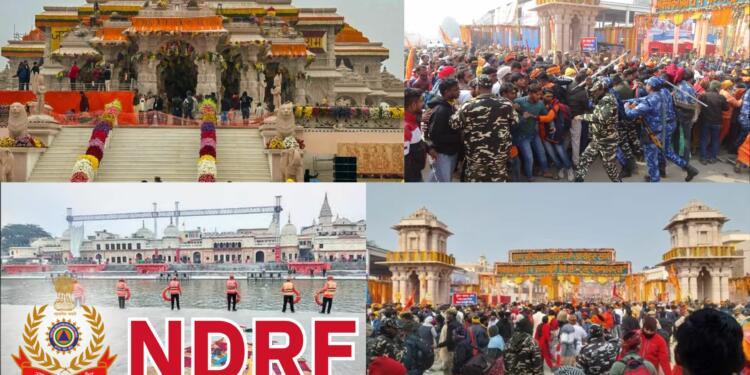The much-anticipated day finally arrived in Ayodhya as the doors of the newly consecrated Ram Mandir opened to the public on January 23. Following a grand ‘Pran Pratishtha’ ceremony attended by Prime Minister Narendra Modi and other key figures, the devotees eagerly thronged the temple grounds to catch a glimpse of the recently installed idol of Ram Lalla. This historic event marks the culmination of a journey that has been centuries in the making, with the temple expected to attract lakhs of pilgrims and tourists in the coming days. The National Disaster Relief Force (NDRF) will ensure the security and safety of the devotees.
A Spiritual Inflow…
The temple’s opening saw an overwhelming rush of devotees on a chilly winter’s day, with many queuing up as early as 3 AM to enter the temple premises, offer prayers, and witness the sacred idol of Ram Lalla. The installation of the 51-inch tall idol crafted by sculptor Arun Yogiraj was the focal point of Monday’s festivities.
Darshan Paused!
Due to the immense crowd, darshan (viewing of the deity) had to be briefly paused, leading the temple administration, in coordination with the police, to implement crowd control measures for the safety of all visitors. Entry for new visitors was temporarily halted, resuming at 2 PM. The Additional Director General of Lucknow Zone, Piyush Mordia, urged visitors to cooperate with police guidelines, emphasizing the importance of avoiding unnecessary delays caused by taking photos for social media.
Managing the Devotee Rush
As the temple opened its doors to the public, live updates depicted the massive crowd outside the Ram Mandir. Devotees formed long queues, with security personnel facing challenges in managing the crowd. The situation escalated, leading to at least one devotee fainting due to the pushing and jostling. The police deployed additional forces to control the crowd and urged people to wait patiently for their turn.
Also Read: Pran Pratishtha of Ram Mandir: Celebrities Went All Emotional
Security Measures: NDRF’s Role in Ensuring Safety
The National Disaster Relief Force (NDRF) played a pivotal role in ensuring the security and safety of devotees at the Ram Mandir in Ayodhya. With expectations of high footfall and the potential for emergencies, the Uttar Pradesh government enlisted three specialized teams from the NDRF.

- The first team, specializing in Flood Water Rescue (FWR), took charge of the banks along the Sarayu River flowing through Ayodhya. Equipped with skilled divers, lifeboats, and lifebuoys, they ensured round-the-clock vigilance to address any water-related emergencies.
- The second team focused on Chemical Biological Radiological and Nuclear (CBRN) emergencies. Positioned near the temple premises, this team had a hazmat vehicle on standby to deal with any chemical or biological threats. Their presence aimed to swiftly respond to and contain any hazardous situations.
- The third team specialized in Collapse Structure Search and Rescue (CSSR). In the event of disasters such as earthquakes or stampedes, this team was strategically placed near the temple gate. They conducted mock drills with the local administration to be well-prepared for any unforeseen circumstances.

These proactive measures by the NDRF underscored the authorities’ commitment to ensuring the well-being of devotees and maintaining a secure environment during the historic opening of the Ram Mandir.
Devotees’ Unprecedented Turnout
The devotion displayed by the devotees surpassed expectations, with an unprecedented number turning up at the Ram Mandir. The entire stretch of the 13-kilometer Ram Path witnessed heavy crowds, and devotees from across Ayodhya and adjoining districts gathered to witness the historic moment.
In Conclusion, As Ayodhya opens its doors to the public for the divine experience at the Ram Mandir, the overwhelming response reflects the deep-rooted spiritual and cultural significance of the event. The journey from the ‘Pran Pratishtha’ ceremony to the opening for devotees signifies a new chapter in Ayodhya’s history, with the Ram Mandir standing not just as a physical structure but as a symbol of unity, peace, and devotion for the entire nation. The enthusiasm of the devotees, the involvement of key leaders, and the stringent security measures all contribute to the unfolding of a momentous chapter in India’s cultural landscape.





























